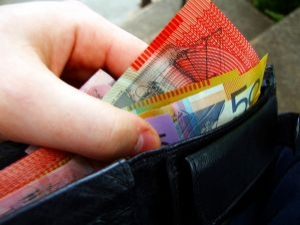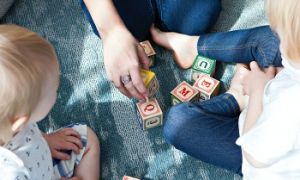Showcasing children’s work creatively can boost their confidence and make them feel valued. The following article provides information on Showcasing Children's Work, Showcasing Children's Work Outdoors, Showcasing Ongoing Projects, Showcasing Collaborative Projects and more.
Showcasing Children's Work
Showcasing children's work gives them a sense of pride and accomplishment. Here are some ideas that you can incorporate into an early childhood setting:
1. Art Galleries
- Classroom Gallery: Dedicate a wall or a corner of the classroom to display children’s artwork. Rotate the displays regularly to feature different pieces.
- Virtual Gallery: Create an online gallery where parents can view their child’s work. This can be done through a class website or a shared photo album.
2. Portfolios
-
Individual Portfolios: Compile each child’s work into a personal portfolio. This can include drawings, writing samples, and photos of projects. Share these portfolios during parent-teacher conferences.
-
Digital Portfolios: Use apps or software to create digital portfolios that can be easily shared with parents.
3. Interactive Displays
-
3D Displays: Use shelves or tables to display three-dimensional projects like sculptures or dioramas.
-
Interactive Boards: Create interactive bulletin boards where children can add their work and parents can leave comments or feedback.
4. Celebration Events
-
Exhibition Nights: Host an exhibition night where children can present their work to parents and peers. This can include art displays, performances, and project presentations.
-
Open House: Organize an open house event where parents can tour the classroom and see their child’s work on display.
5. Storybooks and Journals
-
Class Storybook: Compile children’s stories, drawings, and photos into a class storybook. This can be a collaborative project where each child contributes a page.
-
Learning Journals: Encourage children to keep learning journals where they document their activities and reflections. These can be shared with parents periodically.
6. Digital Presentations
-
Slideshow Presentations: Create slideshows of children’s work and play them during parent meetings or events.
-
Video Showcases: Record videos of children explaining their projects or performing activities. Share these videos with parents through a secure platform.
7. Themed Displays
-
Seasonal Themes: Change displays according to seasons or holidays, incorporating children’s work that relates to the theme.
-
Project-Based Displays: Create displays based on specific projects or units of study, showcasing the process and final products.
8. Community Involvement
-
Local Exhibitions: Partner with local libraries, community centers, or businesses to display children’s work in public spaces.
-
Community Projects: Involve children in community projects where their work can be displayed, such as murals or garden projects.
9. Parent Involvement
-
Parent-Child Projects: Encourage collaborative projects between parents and children that can be displayed in the classroom.
-
Feedback Walls: Create a feedback wall where parents can leave positive comments about the children’s work.
These creative methods not only showcase children’s achievements but also foster a sense of pride and community.
Showcasing Children's Work Outdoors
Showcasing children’s work outdoors can be a wonderful way to celebrate their creativity while enjoying the natural environment. Here are some creative ideas to get you started:
1. Outdoor Art Gallery
-
Fence Displays: Use a section of the playground fence to hang children’s artwork. You can use weatherproof frames or laminate the artwork to protect it from the elements.
-
Clothesline Gallery: String a clothesline between trees or poles and use clothespins to hang the artwork. This creates a dynamic and easily changeable display.
2. Nature-Inspired Exhibits
-
Tree Art: Attach artwork to tree trunks using soft ties or clips. This integrates the art with nature and creates a whimsical display.
-
Garden Art: Place children’s sculptures or painted rocks throughout a garden area. This can turn a simple garden into an interactive art exhibit.
3. Interactive Displays
-
Chalk Art Paths: Create designated areas for children to draw with sidewalk chalk. These can be temporary displays that change with each new creation.
-
Outdoor Easels: Set up easels in the playground or garden where children can create and display their work on the spot.
4. Seasonal Themes
-
Seasonal Murals: Collaborate with children to create large murals on outdoor walls or fences that reflect the current season or upcoming holidays.
-
Nature Collages: Encourage children to create collages using natural materials like leaves, flowers, and twigs. Display these collages on outdoor bulletin boards.
5. Community Involvement
-
Public Art Projects: Partner with local parks or community centers to display children’s artwork in public spaces. This can include murals, sculptures, or painted benches.
-
Art Walks: Organize an art walk event where families can tour the outdoor displays. Provide maps and encourage children to act as guides, explaining their work.
6. Weatherproof Solutions
-
Laminated Art: Laminate children’s artwork to protect it from rain and sun. These can be hung on fences, walls, or even from tree branches.
-
Clear Protective Covers: Use clear plastic covers or frames to protect artwork while still allowing it to be displayed outdoors.
7. Interactive Installations
-
Wind Chimes: Create wind chimes using children’s artwork or crafts. These can be hung from trees or playground equipment, adding a sensory element to the display.
-
Mobiles: Construct mobiles with children’s drawings or small crafts. Hang these from tree branches or pergolas to create a moving display.
8. Outdoor Bulletin Boards
-
Weatherproof Bulletin Boards: Install weatherproof bulletin boards in outdoor areas where children’s work can be displayed and easily updated.
-
Rotating Displays: Regularly rotate the artwork to keep the display fresh and engaging for both children and parents.
These ideas not only showcase children’s creativity but also make the outdoor environment more vibrant and engaging. If you have any specific themes or projects in mind, I can help tailor these ideas further!
Showcasing Ongoing Projects
Showcasing ongoing projects can be a great way to highlight the learning process and keep parents and the community engaged. Here are some creative ways to showcase ongoing projects:
1. Project Journals
-
Individual Journals: Have students keep journals documenting their progress, challenges, and reflections. These can be shared with parents regularly.
-
Class Journals: Maintain a class journal where students contribute entries about the project’s development. This can be displayed in the classroom or shared digitally.
2. Progress Boards
-
Bulletin Boards: Create a bulletin board dedicated to the project. Update it regularly with photos, notes, and samples of work in progress.
-
Interactive Boards: Use interactive bulletin boards where students can add their updates, questions, and ideas.
3. Digital Updates
-
Class Blog or Website: Set up a blog or website where students can post updates, photos, and videos of their ongoing work. This can be a great way for parents to stay informed.
-
Social Media: Use a class social media account (with appropriate permissions) to share regular updates and highlights of the project.
4. Photo and Video Documentation
-
Photo Diaries: Take photos of the project at various stages and create a photo diary. Display this in the classroom or share it digitally.
-
Time-Lapse Videos: Create time-lapse videos showing the project’s progress. This can be a fun and engaging way to visualize the development over time.
5. Regular Presentations
-
Progress Presentations: Schedule regular presentations where students share their progress with the class or parents. This can be done through formal presentations or informal show-and-tell sessions.
-
Peer Reviews: Organize peer review sessions where students present their work to classmates and receive feedback.
6. Interactive Displays
-
Work-in-Progress Walls: Dedicate a wall in the classroom to display ongoing work. Students can add to it as they make progress.
-
Interactive Maps: Create a project map that shows the different stages and milestones. Students can move markers or add notes as they advance.
7. Collaborative Tools
-
Online Collaboration Platforms: Use tools like Google Classroom or Microsoft Teams to share updates, documents, and progress reports. This allows for real-time collaboration and feedback.
-
Shared Documents: Maintain shared documents where students can update their progress and reflect on their learning.
8. Parent Involvement
-
Parent-Teacher Meetings: Discuss ongoing projects during parent-teacher meetings and share updates on the child’s progress.
-
Family Involvement: Encourage parents to participate in certain aspects of the project, such as providing materials or sharing expertise.
9. Reflection and Feedback
-
Reflection Sessions: Hold regular reflection sessions where students discuss what they have learned, challenges they faced, and how they overcame them.
-
Feedback Walls: Create a feedback wall where students and parents can leave comments and suggestions about the ongoing project.
By showcasing the process, you not only highlight the final product but also emphasize the learning journey, fostering a deeper understanding and appreciation of the work involved. If you have any specific projects or themes in mind, I can help tailor these ideas further!
Showcasing Collaborative Work
Showcasing collaborative work within ongoing projects can highlight the teamwork and collective effort involved. Here are some effective strategies:
1. Progress Boards
-
Interactive Bulletin Boards: Create a bulletin board where each team member can post updates, photos, and notes about their contributions. This visual representation helps everyone see the project’s progress and individual contributions.
-
Kanban Boards: Use a Kanban board to track tasks and progress. Each column represents a stage of the project, and team members move tasks through the stages as they complete them.
2. Digital Collaboration Tools
-
Shared Documents: Use tools like Google Docs or Microsoft Teams where team members can collaboratively edit documents and leave comments. This allows for real-time updates and feedback.
-
Project Management Software: Platforms like Trello, Asana, or ClickUp can help manage tasks, deadlines, and responsibilities. These tools often include features for tracking progress and communicating within the team.
3. Regular Updates and Meetings
-
Weekly Check-Ins: Schedule regular meetings where team members can share their progress, discuss challenges, and plan next steps. This keeps everyone aligned and informed.
-
Progress Reports: Have team members submit brief progress reports that can be shared with the group. These reports can highlight individual contributions and overall project status.
4. Visual Documentation
-
Photo and Video Logs: Document the project with photos and videos. Create a visual timeline that shows the project’s development and the collaborative efforts involved.
-
Time-Lapse Videos: Create time-lapse videos of the project work. This can be a fun and engaging way to show the project’s evolution and the teamwork behind it.
5. Interactive Displays
-
Work-in-Progress Walls: Dedicate a wall in the classroom or workspace to display ongoing work. Team members can add updates, sketches, and notes as the project progresses.
-
Feedback Walls: Create a space where team members and observers can leave feedback and suggestions. This encourages continuous improvement and collaboration.
6. Public Presentations
-
Mid-Project Presentations: Organize presentations where teams can share their progress with peers, teachers, or parents. This provides an opportunity for feedback and recognition of collaborative efforts.
-
Open House Events: Host events where the community can visit and see the ongoing projects. This can include interactive elements where visitors can ask questions and learn about the collaborative process.
7. Collaborative Journals
-
Team Journals: Maintain a journal where team members document their thoughts, challenges, and achievements. This can be a shared physical journal or a digital one.
-
Reflection Sessions: Hold regular reflection sessions where team members discuss what they have learned and how they have worked together. Document these reflections and display them alongside the project.
8. Social Media and Blogs
-
Class Blog: Create a blog where teams can post updates, photos, and reflections on their project. This can be shared with parents and the wider community.
-
Social Media Updates: Use a class social media account (with appropriate permissions) to share regular updates and highlights of the project.
By using these strategies, you can effectively showcase the collaborative nature of ongoing projects, highlighting both the process and the teamwork involved. If you have any specific projects or themes in mind, I can help tailor these ideas further!
Involving Children In Curating Their Own Displays
Involving children in curating their own displays can be a fantastic way to empower them, boost their confidence, and make them feel valued. Here are some creative strategies to engage children in this process:
1. Choice and Voice
-
Selection Process: Allow children to choose which pieces of their work they want to display. This gives them a sense of ownership and pride in their achievements.
-
Discussion and Reflection: Have conversations with children about why they chose certain pieces. Encourage them to reflect on what they learned and what they are proud of.
2. Interactive Planning
-
Brainstorming Sessions: Hold group brainstorming sessions where children can share ideas on how they want their work to be displayed. This can include themes, colors, and layout.
-
Sketching Plans: Provide materials for children to sketch out their display ideas. This helps them visualize the final product and feel more involved in the process.
3. Hands-On Involvement
-
Creating Displays: Involve children in the physical creation of the displays. This can include arranging artwork, labeling pieces, and decorating the display area.
-
Crafting Labels: Let children create their own labels or captions for their work. This can include their name, the title of the piece, and a short description or story behind it.
4. Collaborative Projects
-
Group Displays: Encourage children to work together on group projects that can be displayed. This fosters teamwork and a sense of community.
-
Classroom Mural: Create a classroom mural where each child contributes a part. This can be a great way to showcase collective creativity.
5. Digital Involvement
-
Digital Portfolios: Allow children to help create digital portfolios of their work. They can choose which pieces to include and help with scanning or photographing their work.
-
Interactive Slideshows: Create interactive slideshows or videos where children can narrate their work and explain their creative process.
6. Celebration and Presentation
-
Show and Tell: Organize “show and tell” sessions where children present their work to their peers and explain their creative choices.
-
Exhibition Nights: Host exhibition nights where children can act as guides, showing their work to parents and visitors and explaining the significance of each piece.
7. Feedback and Reflection
-
Feedback Walls: Create a feedback wall where children can leave positive comments about each other’s work. This encourages peer recognition and support.
-
Reflection Journals: Encourage children to keep reflection journals where they write about their experiences and feelings related to their displayed work.
8. Incorporating Technology
-
QR Codes: Use QR codes that link to videos of children explaining their work. This adds an interactive element to the display.
-
Digital Displays: Utilize digital photo frames or tablets to create rotating displays of children’s work.
By involving children in curating their own displays, you not only celebrate their achievements but also foster important skills like decision-making, collaboration, and self-reflection.
Further Reading
Importance of Displaying Children's Artwork
Linking Art To The EYLF Learning Outcomes
Benefits Of Art and Craft
Stages Of Artistic Development In Children
Process Art Vs Product Art In Early Childhood Services
Portfolios Making Learning Visible and Accessible
References:
Creative Ways To Display Children's Art, We Are Teachers
Creative and Fun Ways For Children's Displays, The Little Genius
Getting Kids Outside, Nature Organisation
Outdoor Art Activities, Teaching Expertise







 As an Educator in Australia, your pay rate falls under the Children’s Services Award 2010. This award states the minimum amount that an employer can
As an Educator in Australia, your pay rate falls under the Children’s Services Award 2010. This award states the minimum amount that an employer can When working as a qualified Early Childhood Teacher (with a university degree) within a service, your rate of pay will come from the Educational Services
When working as a qualified Early Childhood Teacher (with a university degree) within a service, your rate of pay will come from the Educational Services When working as a Diploma Qualified Educator your pay rate is from the Children's Services Award 2010. This Award states your minimum rate of pay
When working as a Diploma Qualified Educator your pay rate is from the Children's Services Award 2010. This Award states your minimum rate of pay When working as a Cert 3 Qualified Educator, your pay rate is from the Children's Services Award 2010. This Award states your minimum rate of
When working as a Cert 3 Qualified Educator, your pay rate is from the Children's Services Award 2010. This Award states your minimum rate of Educational Leaders play a crucial role in their early childhood service by ensuring that the educational program aligns with best practices and supports the holistic
Educational Leaders play a crucial role in their early childhood service by ensuring that the educational program aligns with best practices and supports the holistic In early childhood education and care, ratios are more than a technicality—they are a frontline safeguard. Every child deserves responsive supervision, emotional connection, and developmental
In early childhood education and care, ratios are more than a technicality—they are a frontline safeguard. Every child deserves responsive supervision, emotional connection, and developmental Here’s a comprehensive Mobile Phone and Smart Watch Policy tailored for early childhood education and care (ECEC) services in Australia, aligned with the latest 2025
Here’s a comprehensive Mobile Phone and Smart Watch Policy tailored for early childhood education and care (ECEC) services in Australia, aligned with the latest 2025 With the new national child safety reforms kicking in on 1 September 2025, early childhood services like yours have a real opportunity to lead the
With the new national child safety reforms kicking in on 1 September 2025, early childhood services like yours have a real opportunity to lead the The Sea of Fish Challenge is a national initiative that invites children, educators, families, and communities to create and display fish artworks as a symbol
The Sea of Fish Challenge is a national initiative that invites children, educators, families, and communities to create and display fish artworks as a symbol Across the early childhood education and care sector, educators are sounding the alarm: current staffing ratios are insufficient to deliver safe, meaningful, and developmentally appropriate
Across the early childhood education and care sector, educators are sounding the alarm: current staffing ratios are insufficient to deliver safe, meaningful, and developmentally appropriate


